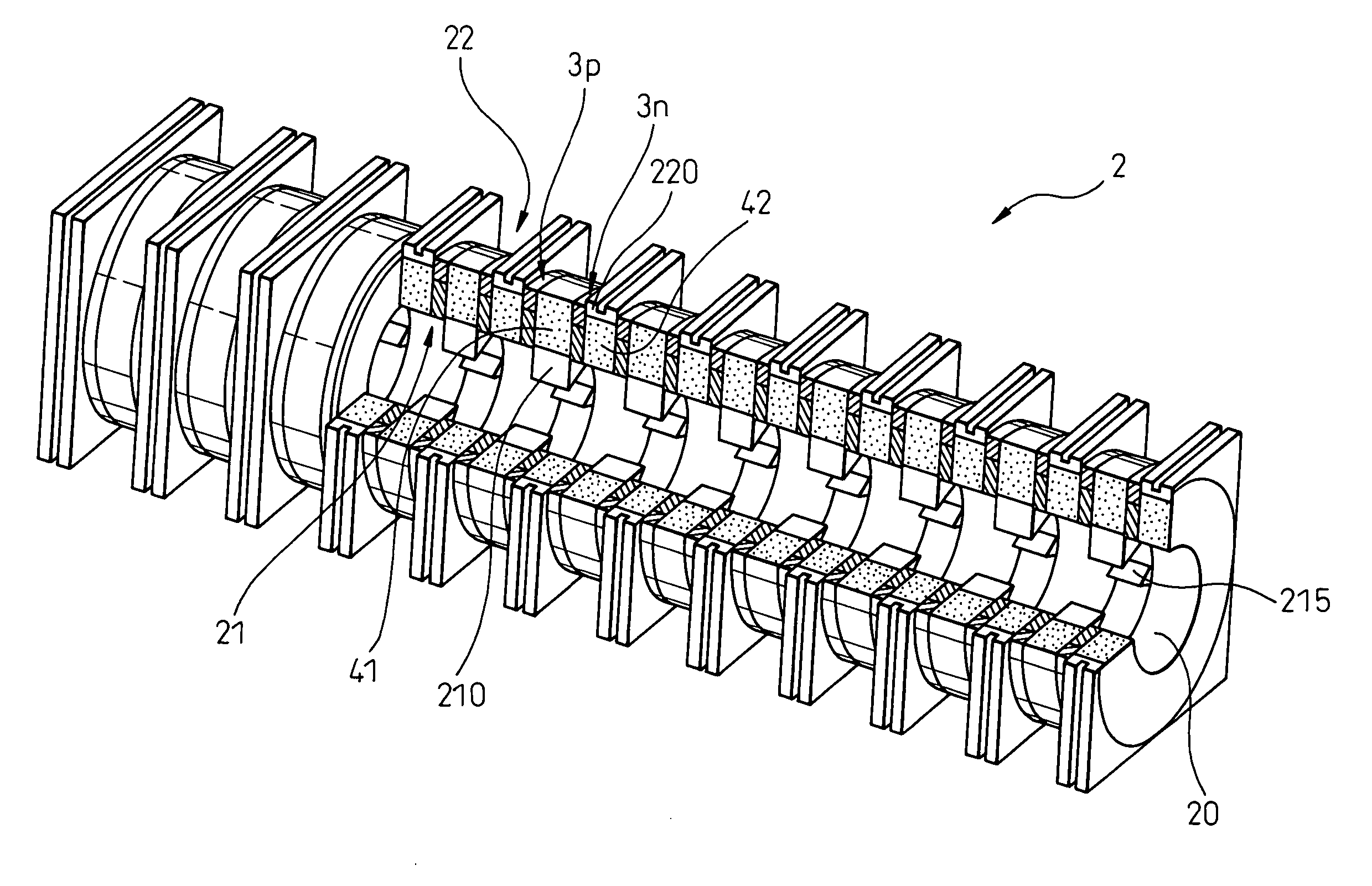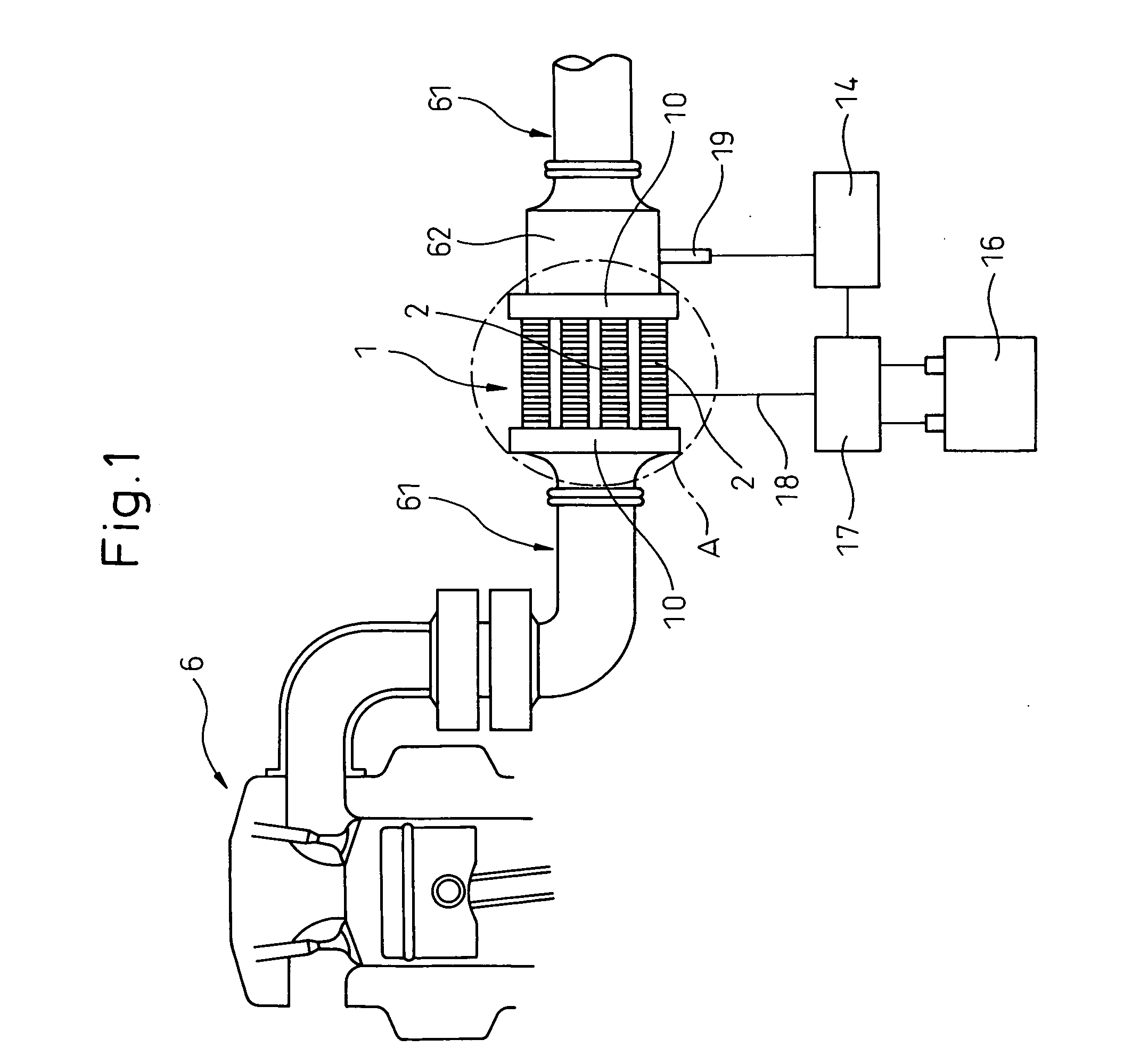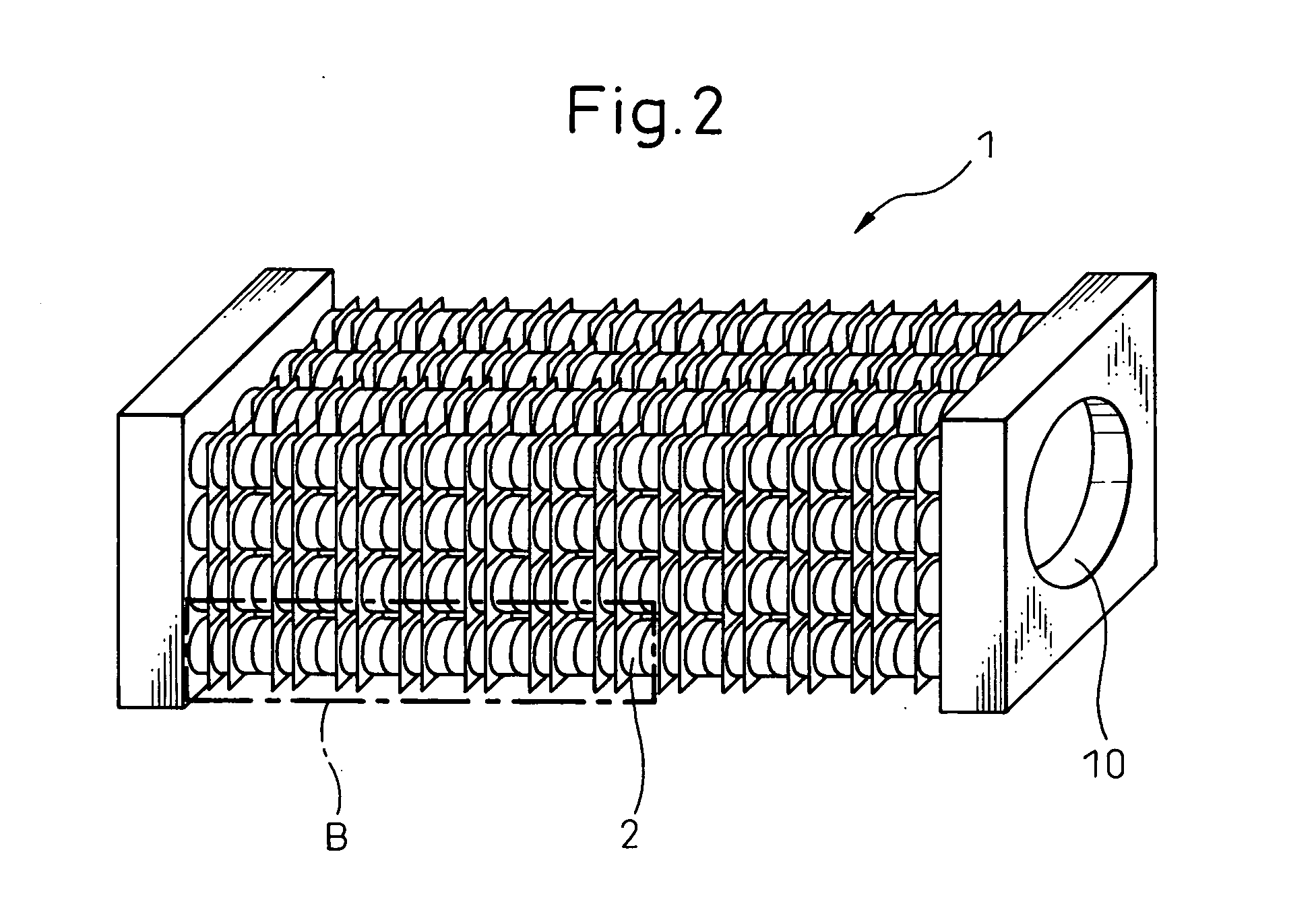Exhaust heat recovery system
- Summary
- Abstract
- Description
- Claims
- Application Information
AI Technical Summary
Benefits of technology
Problems solved by technology
Method used
Image
Examples
first embodiment
[0048] An exhaust heat recovery system according to a first embodiment of the invention will be described with reference to FIGS. 1 to 11.
[0049] As shown in FIGS. 1 and 2, the exhaust heat recovery system according to the embodiment has an exhaust path 10 which allows the passage of exhaust gases of an internal combustion engine 6 and thermoelectric modules 2 which are disposed in the exhaust path 10.
[0050] The thermoelectric module 2, as shown in FIGS. 3 and 4, has an exhaust pipe portion 20 which allows the passage of exhaust gases therethrough, p-type semiconductors 3p and n-type semiconductors 3n which both constitute thermoelements 3 which each convert a difference in temperature between a high temperature end portion 21 and a low temperature end portion 22 into electricity, low temperature side heat exchanging portions 220 disposed at the low temperature side end portions 22 of the thermoelectric module 2, and high temperature side heat exchanging portions 210 disposed at th...
second embodiment
[0084] A second embodiment is such that the fabrication process of the thermoelectric module 2 is modified based on the exhaust heat recovery system according to the first embodiment. The contents of the second embodiment will be described using FIGS. 6, 7, 12 and 13.
[0085] In this embodiment, as shown in FIG. 12, respective semiconductors 31p, 32p (31n, 32n) having substantially annular flat plate-like shapes were prepared in advance, and a semiconductor 3p (3n) shown in FIG. 13 was obtained by combining the respective semiconductors so prepared. Thereafter, respective heat insulating support members 41, 42 and the semiconductors 3p, 3n were stacked together to thereby obtain a thermoelectric module.
[0086] Here, as to the respective semiconductors 31p, 32p, 31n, 32n, desired shapes may be obtained directly by virtue of calcination or desired shapes can be realized by machining calcined products. In addition, as shown in FIG. 13, in combining the semiconductor 31p (31n) with the s...
third embodiment
[0090] A third embodiment is such that the configuration of separated thermoelements is modified based on the exhaust heat recovery system according to the first embodiment. The contents of the third embodiment will be described using FIGS. 14 and 15.
[0091] In a thermoelectric module 2 according to this embodiment, as shown at a portion (A) in FIG. 14 and in FIG. 15, a ratio (A / B) of the radial thickness A (FIG. 15) of high temperature elements 31p, 31n which are separated thermoelements of a high temperature side end portion 21 and the radial thickness B (FIG. 15) of low temperature elements 32p, 32n which are separated thermoelements of a low temperature side end portion 22 is made to change according to location in a longitudinal direction of an exhaust pipe portion 20.
[0092] Namely, as shown at a portion (B) in FIG. 14, the temperature T of exhaust gases changes depending on positions along the longitudinal direction of the exhaust pipe portion 20 and is highest at a most upst...
PUM
 Login to View More
Login to View More Abstract
Description
Claims
Application Information
 Login to View More
Login to View More - R&D
- Intellectual Property
- Life Sciences
- Materials
- Tech Scout
- Unparalleled Data Quality
- Higher Quality Content
- 60% Fewer Hallucinations
Browse by: Latest US Patents, China's latest patents, Technical Efficacy Thesaurus, Application Domain, Technology Topic, Popular Technical Reports.
© 2025 PatSnap. All rights reserved.Legal|Privacy policy|Modern Slavery Act Transparency Statement|Sitemap|About US| Contact US: help@patsnap.com



